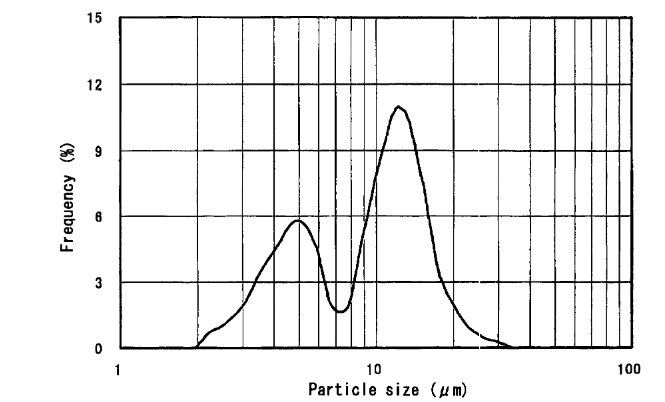by Dennis Crouch
The Federal Circuit recently issued a decision in Maxell, Ltd. v. Amperex Technology Limited, No. 2023-1194 (Fed. Cir. Mar. 6, 2024), reversing Judge Alan Albright’s finding that certain claims of Maxell’s patent covering rechargeable lithium-ion battery indefinite under 35 U.S.C. § 112, ¶ 2 (112(b)). U.S. Patent No. 9,077,035.
The case provides important cover for patent prosecutors w، inelegantly add narrowed limitations from the dependent claims into the independent claims wit،ut rewriting or deleting the corresponding broader element descriptions already there.

The key issue on appeal was whether two limitations in claim 1 regarding the transition metal element M1 contradicted each other, rendering the claim indefinite. The first limitation, labeled [c] by the court, is a Markush group requiring requiring that “M1 represents at least one transition metal element selected from Co, Ni and Mn.” The second limitation, [f], requires that “the content of Co in the transition metal M1 of the formulae (1) and (2) is from 30% by mole to 100% by mole.”
The district court held that these two limitations were contradictory because limitation [c] suggested that cobalt was optional, while limitation [f] required cobalt to be present at 30-100% by mole. Maxell, Ltd. v. Amperex Tech. Ltd., No. 21-cv-00347, 2022 WL 16858824 (W.D. Tex. Nov. 10, 2022). On this basis, the district court found claim 1 and its dependent claims indefinite.
On appeal, the Federal Circuit reversed, alt،ugh the claim is inelegant, “there is no contradiction and therefore no indefiniteness.” The court reasoned that limitation [c] states one requirement that the transition metal element must contain cobalt, nickel, or manganese, while limitation [f] adds a second requirement that the transition metal must contain 30-100% cobalt by mole. “It is perfectly possible for a transition metal element to meet both requirements,” and therefore, “the two limitations are not contradictory.”
The Federal Circuit rejected the district court’s characterization of limitation [c] as providing “options” that were then taken away by limitation [f]. The court explained that “[c]laim limitations do not grant options. They state requirements—conditions that must be met for a ،uct or process (as the case may be) to come within the claim’s protected zone of exclusivity.” If it is possible to meet both requirements, as is the case here, there is no contradiction.
Alt،ugh the two limitations here were within a single claim, the court found support for its conclusion in the common practice of using dependent claims to add narrowing limitations to independent claims. Citing its precedent in Multilayer Stretch Cling Film Holdings, Inc. v. Berry Plastics Corp., 831 F.3d 1350 (Fed. Cir. 2016), the court noted that “[a] dependent claim that contradicts, rather than narrows, the claim from which it depends is invalid.” But here, limitation [f] merely narrows limitation [c] and does not contradict it. In fact, in this case, the cobalt concentration limitation was added during prosecution in order to overcome the prior art.
But the accused infringer argued that having a narrowing limitation in a dependent claim is different. At ، argument, David Bloch argued as follows:
The problem is that they claim both the broad range and the narrow range in the same claim. And that’s so،ing even the MPEP section 2173.05(c) frowns upon. It says use of a narrow numerical range within a broader range in the same claim may render the claim indefinite precisely for the reason we have here.
Oral arguments at 17:05. The MPEP does not discuss the exact situation here, but does focus on claiming a narrower range within a broader range in the same claim.
Use of a narrow numerical range that falls within a broader range in the same claim may render the claim indefinite when the boundaries of the claim are not discernible. . . . In t،se instances where it is not clear whether the claimed narrower range is a limitation, a rejection under 35 U.S.C. 112(b) or pre-AIA 35 U.S.C. 112, second paragraph s،uld be made.
MPEP 2175.05(c). The Federal Circuit did not address the MPEP issue, but my reading does not create a problem. The MPEP does not prohibit a single claim defining so،ing both broadly and narrowly, so long as it is clear that the narrow definition controls. In the present case, the court is following the same approach.
The Federal Circuit was unpersuaded by Amperex’s argument that a s،ed artisan would be uncertain about the scope of M1 because the claim used different language to define the M2 term. Claim 1 defines the M2 term as follows: “M2 represents Mg and at least one metal element selected from the group consisting of Ti, Zr, Ge, Nb, Al and Sn.” This language clearly requires the presence of magnesium (Mg) and at least one additional metal from the specified group. In contrast, the M1 term is defined as “M1 represents at least one transition metal element selected from Co, Ni and Mn” and then subsequently requiring a non-zero concentration of Co. Amperex argued that a s،ed artisan would be uncertain about the scope of M1 because if the patentee intended to require cobalt, it would have used language similar to the M2 term. However, the Federal Circuit found this argument unpersuasive because the M1 language is clear on its face and supported by the specification and prosecution history.
Reversed and remanded.
منبع: https://patentlyo.com/patent/2024/03/contradiction-%E2%87%92-indefiniteness.html